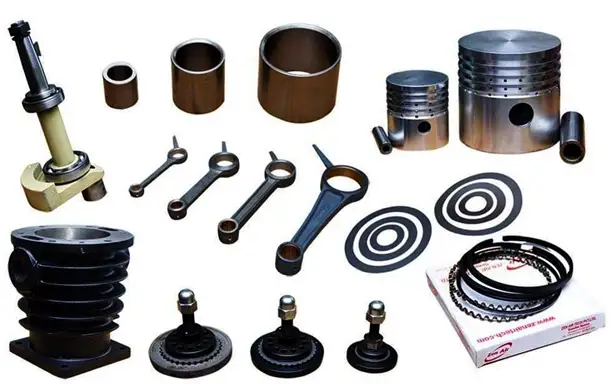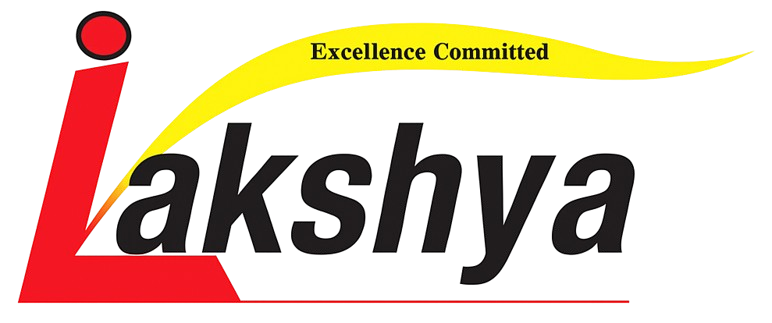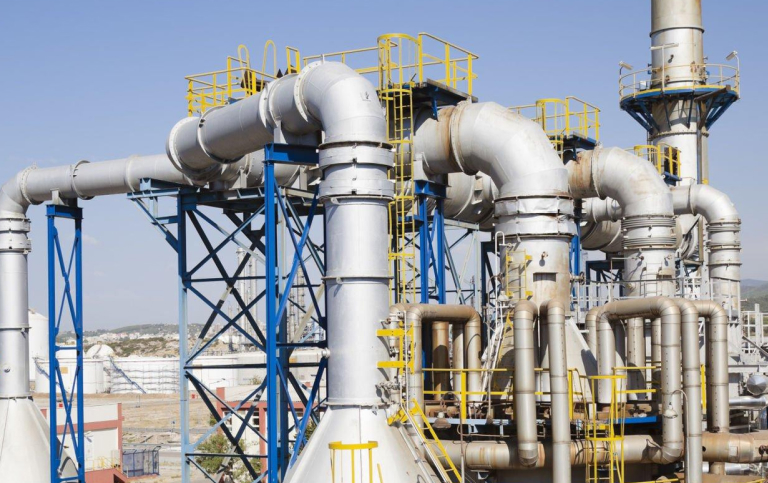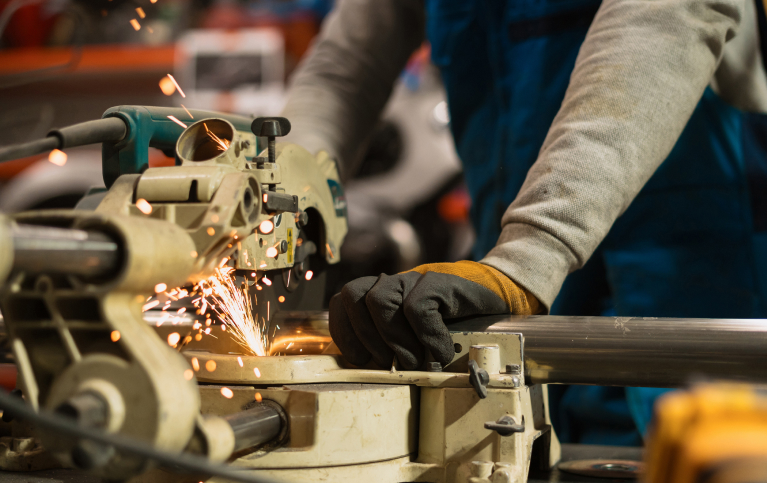Reciprocating Air Compressor Parts
Main & Auxiliary Components for Efficient Performance

🔧 Main Parts of a Reciprocating Air Compressor
Main parts are the core components that perform the compression process. These include the cylinder, piston, crankshaft, connecting rod, valves, bearings, flywheel, and lubrication system. They ensure smooth air compression, minimize leakage, and deliver reliable performance.
⚙️ Auxiliary Parts of a Reciprocating Air Compressor
Auxiliary parts are the supporting components that improve efficiency, safety, and durability. These include the air filter, intercooler, aftercooler, receiver tank, pressure gauge, safety valve, unloader, drive system, and motor. They help maintain clean air, control pressure and temperature, and ensure safe operation.
Reciprocating Air Compressor Parts
Main & Auxiliary Components for Efficient Performance
Cylinder
The chamber where air is compressed.
Piston
Moves up and down in the cylinder to compress air.
Piston Rings
Prevent leakage of air between piston and cylinder wall.
Crankshaft
Converts rotary motion into reciprocating motion of piston.
Connecting Rod
Connects piston to crankshaft.
Crankcase
Houses the crankshaft and lubricating oil.
Main Bearings
Support the crankshaft and allow smooth rotation.
Valves
Inlet & discharge valves regulate air flow in the cylinder.
Cylinder Head
Mounted on top of the cylinder, houses the valves.
Flywheel
Stores rotational energy and ensures smooth piston motion.
Connecting Rod Bearings
Reduce friction between crankshaft and connecting rod.
Distance Piece
Provides space between cylinder and crankcase.
Gaskets
Provide sealing between cylinder head, valve plate, etc.
Lubrication System
Ensures smooth operation of moving parts.
Air Filter
Cleans air before entering compressor.
Intercooler
Cools air between stages in multistage compressors.
Aftercooler
Reduces air temperature before storage or use.
Air Receiver Tank
Stores compressed air at stable pressure.
Pressure Gauge
Shows air pressure in the system.
Safety Valve
Protects against overpressure.
Unloader
Releases trapped air during startup for easy motor operation.
Coupling / Belt Drive
Transfers power from motor to crankshaft.
Motor / Engine
Provides the driving power.



